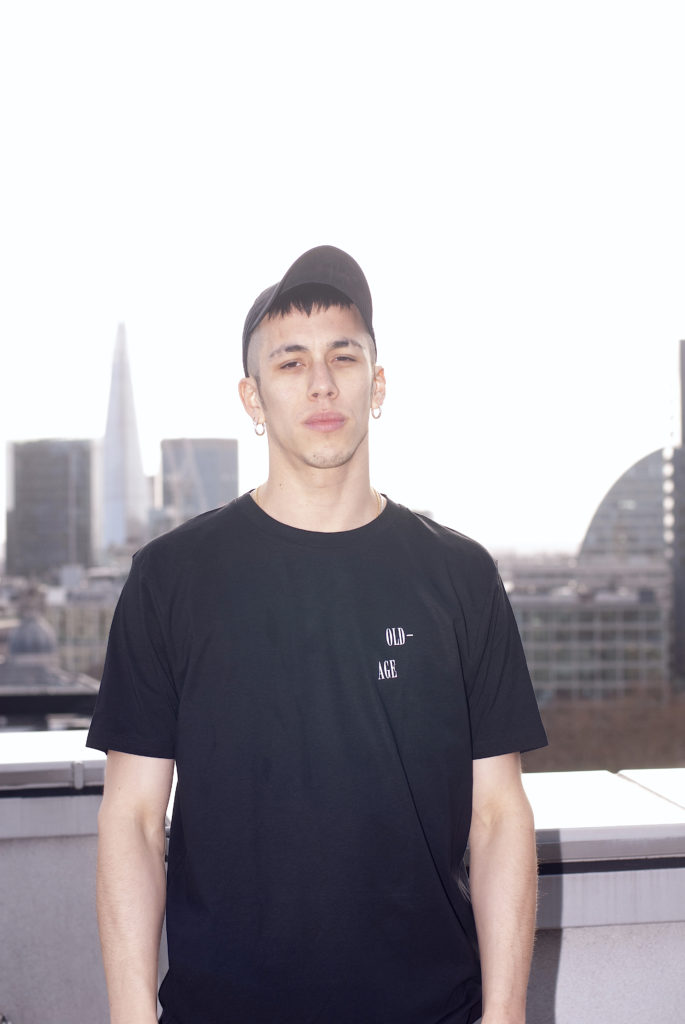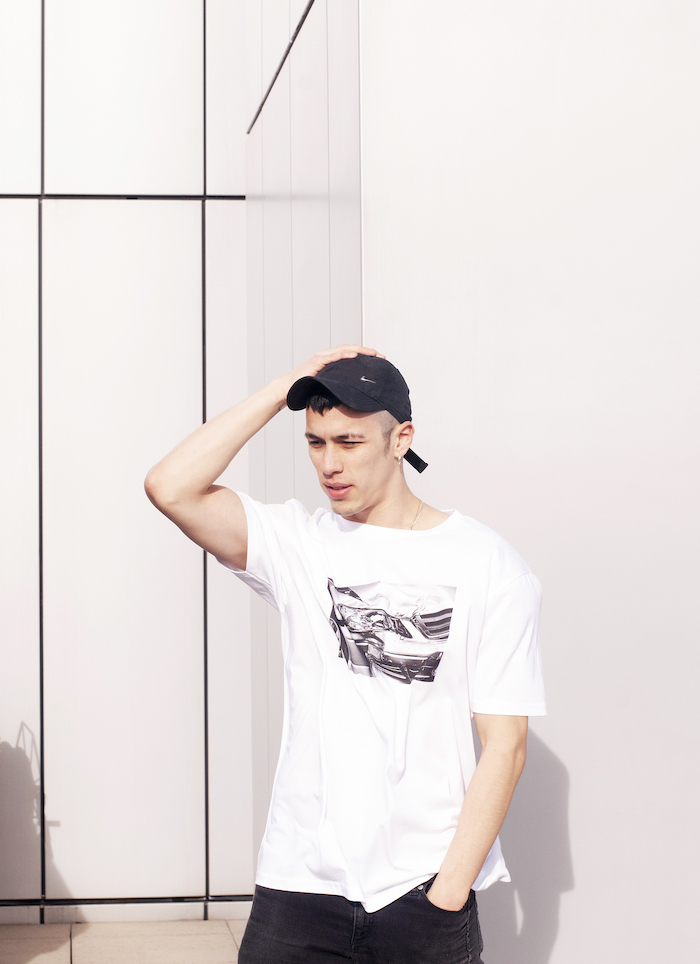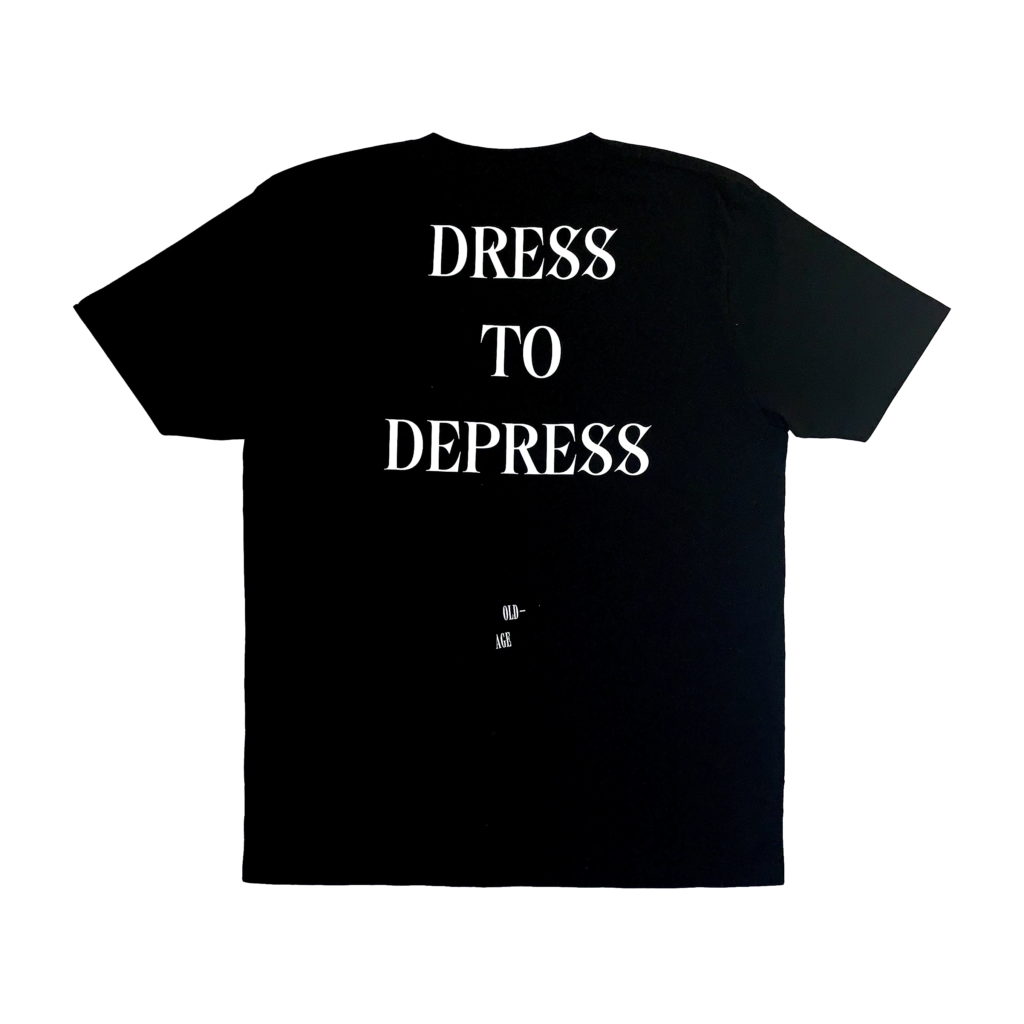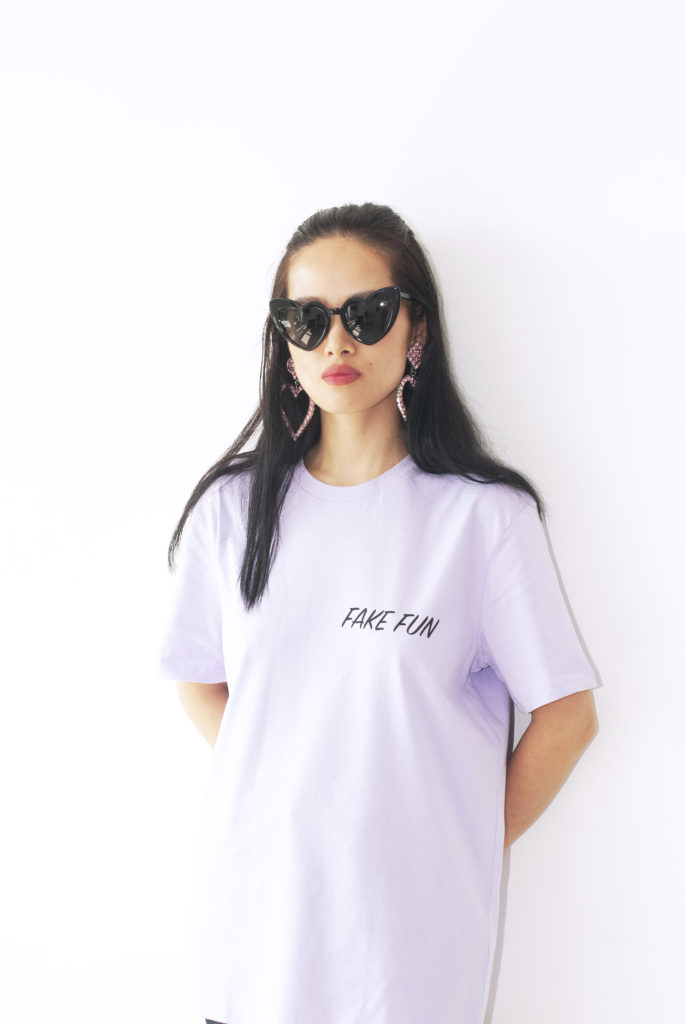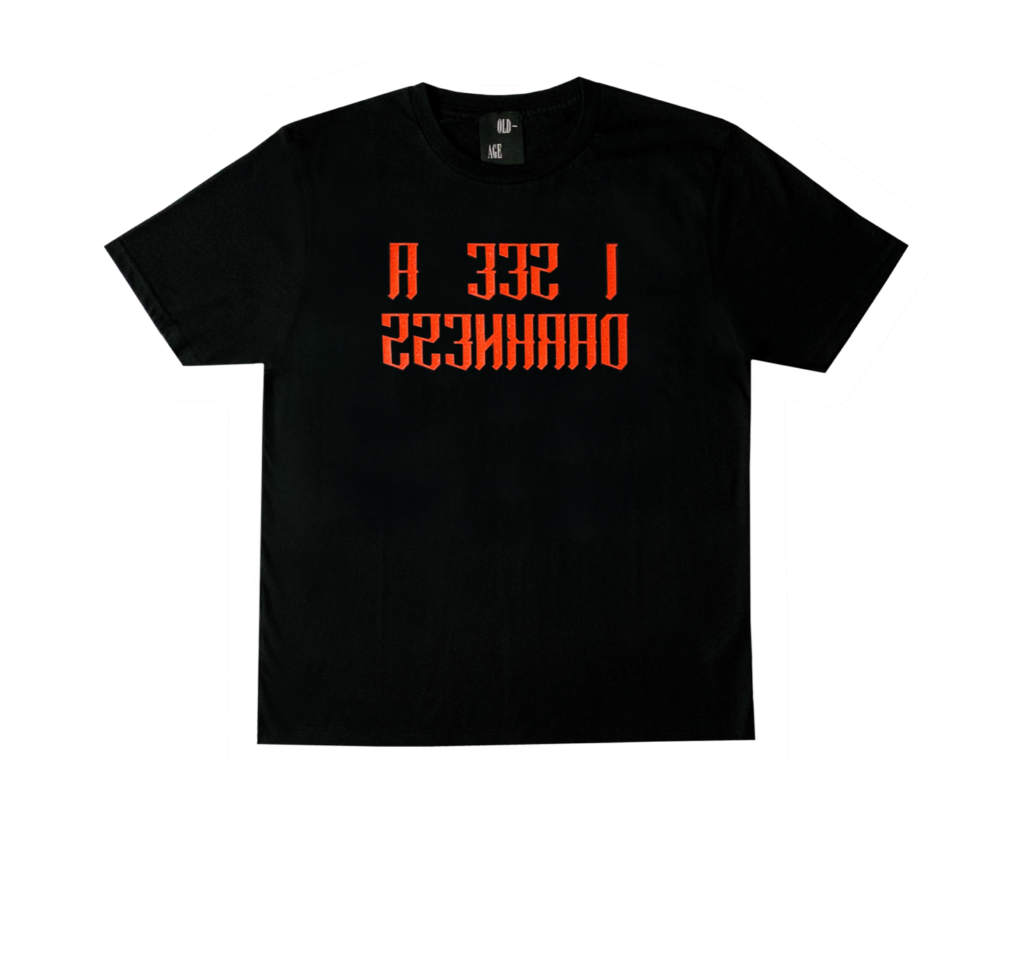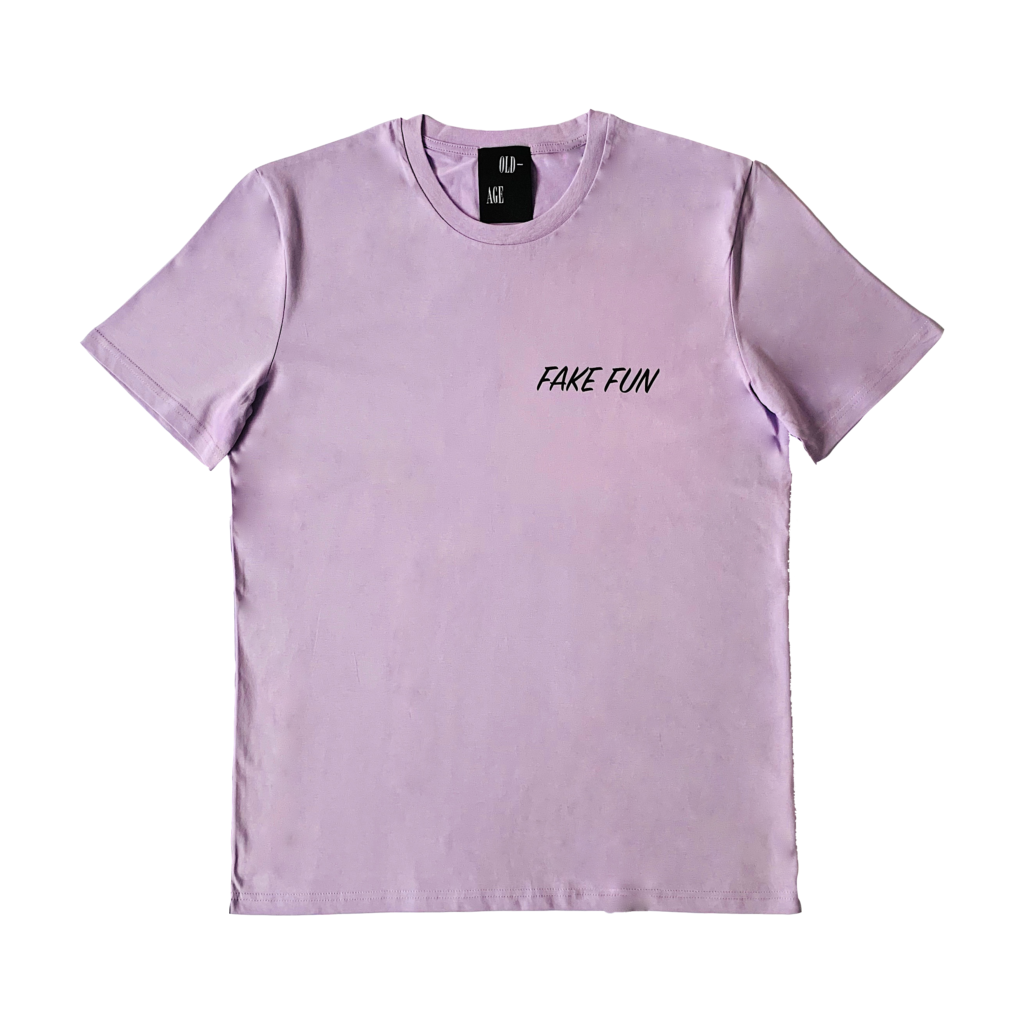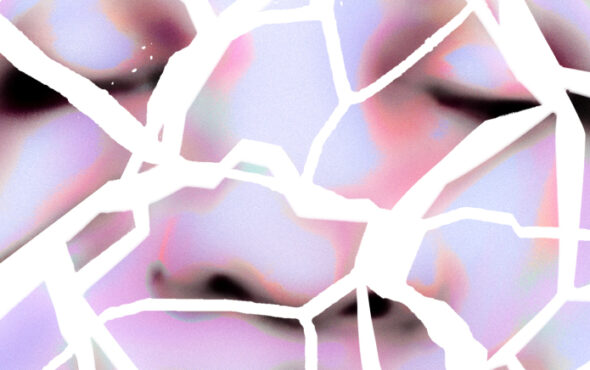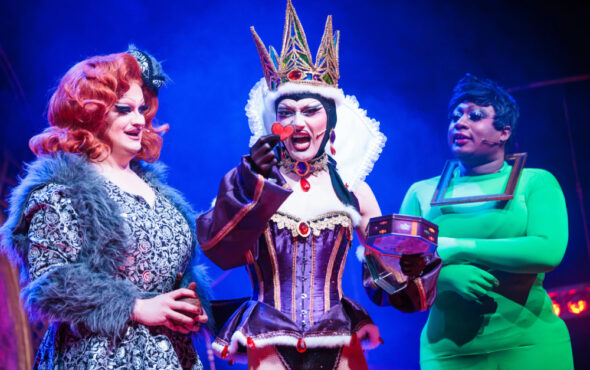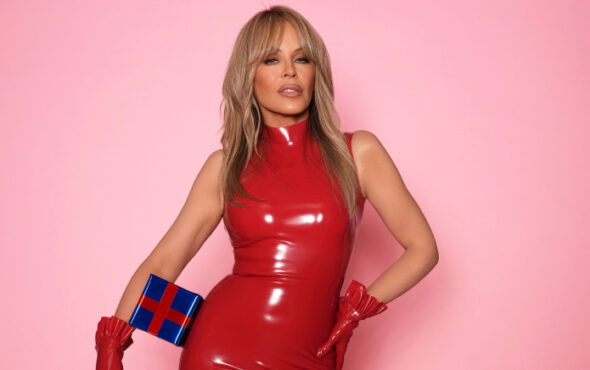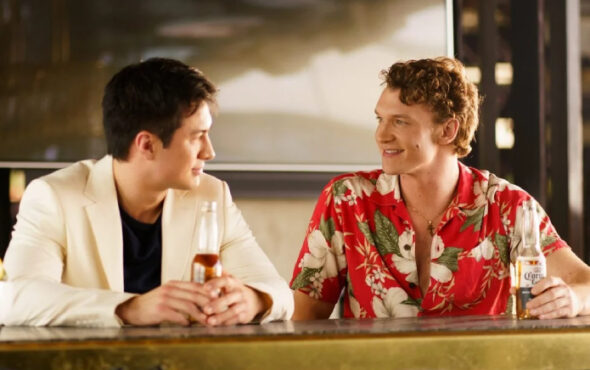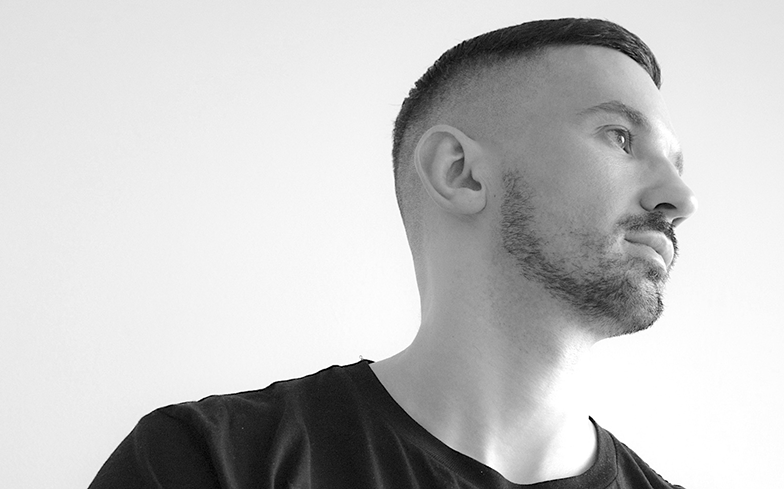
“As a consumer I believe it’s really important to be conscious of where you spend your money and support brands that align with your values.”
Whether it’s incorporating dry humour and tongue in cheek satire into his collection, or touching upon the juxtaposition between queer identity and streetwear culture, GAY TIMES delves into the mind and world of queer artist Leo Babsky, the brains and creative force behind streetwear brand, Old-Age.
What were the points of references that inspired your new collection?
For the current collection ‘Bored & Depressed’ we were really thinking about how social media promotes this super happy, upbeat façade which isn’t a reality for a lot of people, or at least not a reality 100% of the time. Instagram or social media can be great but it’s also really ridiculous a lot of the time and it’s good to remember not to buy into it too much. It’s really ok if your personality is more on the darker side, or if being positive is a bit of a struggle for you. It’s not super deep though, ‘Fake Fun’ – a phrase that’s used in the collection – is just a really catchy slogan and something like ‘Dress To Depress’ is definitely tongue in cheek. For the next collection we are looking at masculinity and all the associations that go along with that.
Your new collection comments a lot on teenage angst and the rise of social media, do you think social media has had a negative impact on the younger generations?
I think social media is a positive force in so many ways, from highlighting things such as social justice and accountability to making it so much easier for creatives to get their output seen, but yeah absolutely it also can be extremely damaging. As I said, if everyone is presenting this perfect facade, that’s super depressing if your life doesn’t fit that mould. We definitely are not anti social media, it’s more that our message is to make your own scene and to not feel pressured to fit into anything prescribed to you.
As a creative, there’s constant pressure to create and grow – how do you maintain a healthy mindset and working environment?
That’s a good question and I wish I had a better answer, but it really is all those boring things like not partying too much, getting enough sleep, meditation, exercise… London is a tough city and it’s a struggle for sure.
As a street-wear brand, how do maintain a unique perspective on a such a popular market?
It is a crowded market and that can feel overwhelming but I think our range of interests are pretty disparate and how those interests intersect make for an interesting product. I don’t see what we do as art but coming from an art background I think it does help separate us. We try and be fun and accessible but also slightly ‘off’ at the same time… I like things not making sense on first glance.
There is a lot of emphasis on the queer identity within your collections, how important is it to define queerness and work it into your clothing?
I suppose I see queerness as less about being specifically LGBTQI (although of course that is really important to us too) and more about a certain mindset. My friendship group is straight, gay, rich, poor, artists, porn stars, escorts, strippers… and I really wanted something that embraced all those things.
Do you think streetwear brands have been less open to embracing queer culture in favour of perpetuating masculine archetypes synonymous with street culture?
Yeah I would say so. I always liked those skate labels like Palace, Supreme etc but I never really felt they were for me – I guess thats partly why I chose to start the brand. Supreme have done the Nan Goldin and Jean Paul Gaultier collaborations – which were awesome – but that change has been fairly recent.
What can we expect for future collections?
There’s all the boring, technical stuff like making sure the t-shirts are the right thickness, the sweatshirts are the right weight etc – all the things that you don’t realise will be so hard when you start a clothing brand. In terms of design, once we have the reach and a larger platform I’d like to start offering emerging artists the chance to design one-off tees or capsule collections – something like that. We do that to a degree now but I’d like to make that more explicit.
You admirably donate 10% of your profits to Human Rights Watch, how important is this organisation to your brand and yourself?
It’s really important, HRW do amazing work and they get results. In a more general sense, I think we live in strange times, there has been so much progress but there is also a massive pushback right now against civil and environmental rights and we all have to do what we can to fight that. We are a tiny brand and we aren’t making a huge amount of money but we certainly can afford to give a few pounds from each t-shirt sale towards a cause we believe in. As a consumer I believe it’s really important to be conscious of where you spend your money and support brands that align with your values.
Oh wow so many. I’ve been a big fan of Felix Gonzalez-Torres for a long time; he manages to combine the political and personal in a very beautiful, unpretentious and accessible way. I like the documentary photography of Bruce Davidson and the photojournalism of Kirk McKoy, Davidson did an amazing series on the subways of early 1980’s New York – the era I would go back in time to if I could. Currently, I like the Berlin gallery Kraupa-Tuskany Zeidler, their roster of artists are really interesting, La Batarde are a t-shirt brand I like who donate all profits to help women in North and South Ireland access abortion services and I just saw work by Marianne Thoermer last night which was awesome.Shop Old-Age here.
Follow Leo’s Instagram here.
